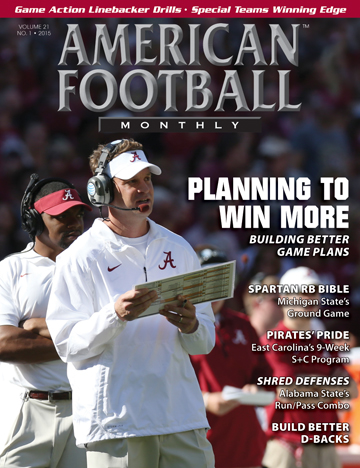Article CategoriesAFM Magazine
|
Special Teams Winning Edge (Part II)by: Brett HickmanSpecial Teams Coach, Gardner-Webb University © More from this issue In the December issue, we discussed the head coach setting the tone for special teams play, the importance of other assistant coaches being involved in areas of special teams, setting goals, and strategy for the punt unit, kickoff unit, kickoff return unit and punt return unit. In this article, we’ll discuss practice efficiency and key points to consider when game planning for your next opponent. Each spring, we evaluate our performance from the previous season and begin laying the foundation for the next one. Typically, we practice special teams two or three times a week over the course of the month we are on the field. The majority of the work is focused on fundamental development for two reasons. One, we need our young men who contributed little the prior season or those that redshirted....The full article can only be seen by subscribers.
|
|
|||||||
| HOME |
MAGAZINE |
SUBSCRIBE | ONLINE COLUMNISTS | COACHING VIDEOS |
Copyright 2025, AmericanFootballMonthly.com
All Rights Reserved





